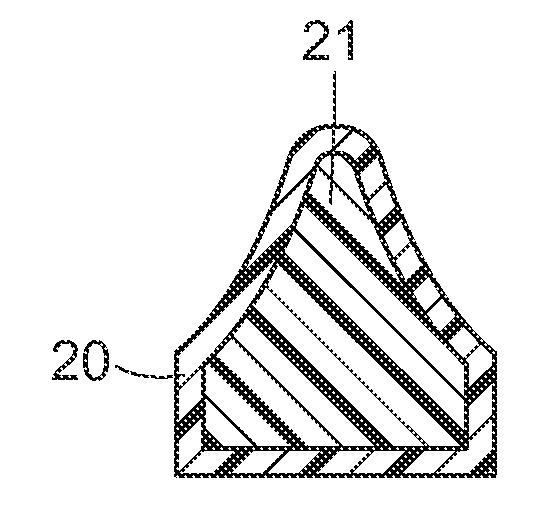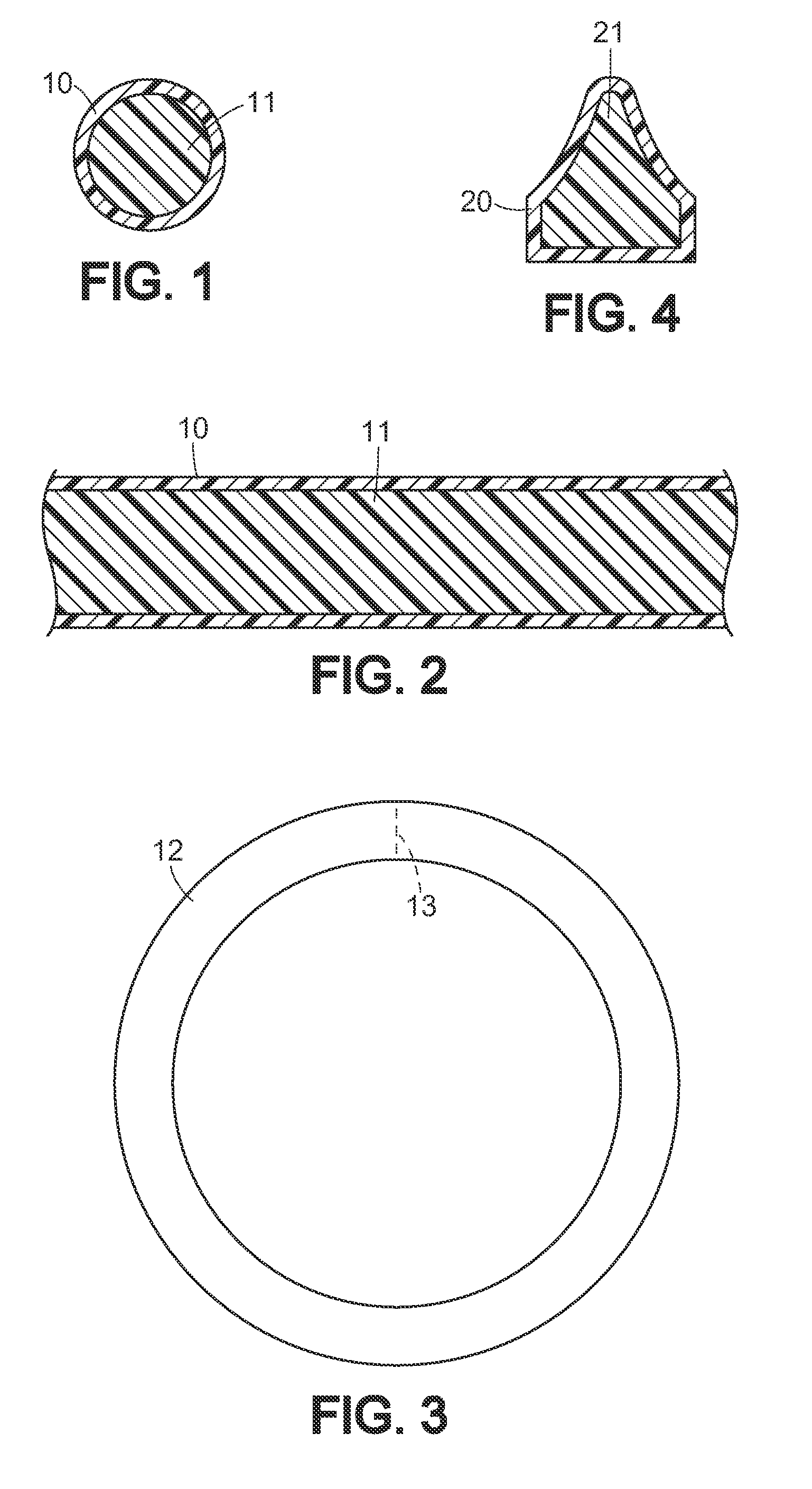Method of making high performance seals
- Summary
- Abstract
- Description
- Claims
- Application Information
AI Technical Summary
Benefits of technology
Problems solved by technology
Method used
Image
Examples
Embodiment Construction
[0012]The process of the invention is particularly useful in connection with the manufacture of various temperature- and chemical-resistant seals, such as O-rings, lobed rings, such as X-rings, gumdrop seals, and various customized forms of compression seals. The process is unique in providing for the co-molding of an FFKM outer layer together with a more resilient core, without the requirement of adhesives or special bonding agents, to realize a particularly advantageous combination material useful particularly in connection with the manufacture of sealing elements with excellent service life under severe conditions while having improved sealing characteristics. The process involves an initial encapsulation of a resilient elastomer within a sheath or jacket of an FFKM, configuring the encapsulation product to form the desired seal (e.g., an O-ring), and then curing (vulcanizing) the product under heat and pressure in a compression mold.
[0013]A wide variety of commercially available...
PUM
| Property | Measurement | Unit |
|---|---|---|
| Length | aaaaa | aaaaa |
| Thickness | aaaaa | aaaaa |
| Pressure | aaaaa | aaaaa |
Abstract
Description
Claims
Application Information
 Login to View More
Login to View More - R&D
- Intellectual Property
- Life Sciences
- Materials
- Tech Scout
- Unparalleled Data Quality
- Higher Quality Content
- 60% Fewer Hallucinations
Browse by: Latest US Patents, China's latest patents, Technical Efficacy Thesaurus, Application Domain, Technology Topic, Popular Technical Reports.
© 2025 PatSnap. All rights reserved.Legal|Privacy policy|Modern Slavery Act Transparency Statement|Sitemap|About US| Contact US: help@patsnap.com


